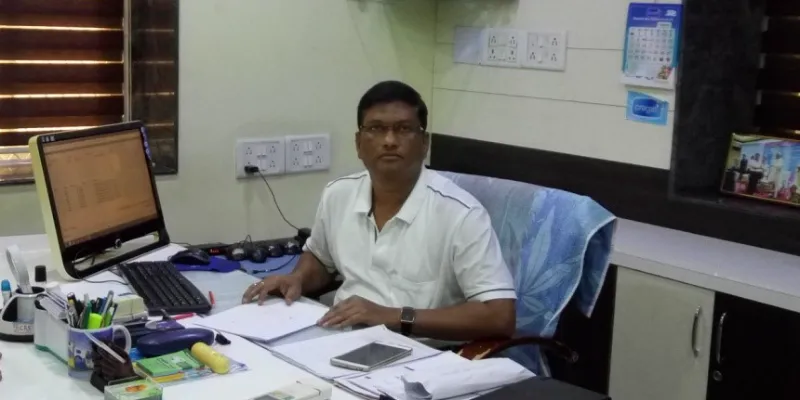Meet the Odisha entrepreneur who took his dairy brand to Rs 300 Cr and captured 40 pc market share
Pradosh Kumar Rout started Pragati Milk in 2008. Today, the brand has a daily milk capacity of 2.5 lakh litres a day and also makes ice cream, ghee, curd, and paneer. Here's Pradosh's story.
In 2008, Pradosh Kumar Rout was putting pen to paper to register his dairy company Pragati Milk. The Cuttack-based entrepreneur had one goal: tap into Odisha's unorganised dairy sector in order to bring it under a brand.
"I saw only 20 percent of the organised dairy sector was covered by existing suppliers. The other 80 percent had great potential and was waiting to be tapped," Pradosh says.
He launched Pragati Milk in the same year, and started procuring milk from dairy farmers at village collection points. Most of this was milk from cows, as buffalo milk makes up just 15 percent of total production in the state.
The cow milk was then taken in insulated tankers to a processing plant. After chilling, pasteurisation, and packaging, the packets of milk then went into delivery vans that delivered the milk to a wide network of distributors.
Pragati continues to follow this approach in 2019. It's annual revenue of Rs 300 crore is telling of its expansion into one of Odisha's most prominent diary players (the company claims it is the largest in the state).

Pradosh Kumar Rout, Founder, Pragati Milk
Industry context
India is the world's largest milk producer. The country's dairy sector is a Rs 9,168 billion (Rs 9.16 lakh crore) market comprising a complex network of farmers, dairy cooperatives, private players, and cooperative federations.
The top dairy companies, such as Amul, Mother Dairy, Heritage and Karnataka Cooperative Milk Federation (which sells its products under the Nandini brand), all have massive production capacities. Amul, the largest one, claims a daily milk handling capacity of five million litres.
Compared to the market leaders, Pragati is small. It started off with a five thousand litres per day capacity, and today, it has a milk capacity of around 2.5 lakh litres a day.
However, it has captured around 40 percent of market share in Odisha, Pradosh claims, adding that he has invested Rs 6 crore in the venture.
"I invested Rs 2 crore out of my own pocket. The remaining Rs 4 crore came from bank loans," he says.
In 2010, Pragati followed in the footsteps of the top dairy companies by starting to make milk products such as ice cream, ghee, curd, and paneer. Dairy brands do this as the margin is higher on these value-added products than on milk.
"Through strong planning, hard work, and recognising the potential market demand for related products, we started making the value-added products," Pradosh adds.

Pragati Milk's product range
Challenges and future plans
Besides a few initial challenges, such as tax payments, Pradosh says the company didn't face many hurdles.
He says, "No further challenges came up since there is great scope in the milk products sector. To stay clear of issues, we use cold chain management systems through refrigerated vehicles. We also take a hundred percent cash advancement from retailers, and do our own capital management."
Pradosh seems to have figured out the strategy to succeed in the dairy industry, but Odisha has a long way to go in increasing its per capita milk availability.
A 2016 study by the National Dairy Development Board (NDDB) revealed that the state's per capita milk availability is 117 grams per day. The nation's average is 307 grams per day.
However, milk production in the state increased over two decades, from 5.8 lakh metric tonnes in 1994-95 to 19 lakh metric tonnes in 2014-15, the NDDB study showed.
Odisha's leading producer of milk is the local state cooperative federation. But with a healthy 40 percent market share, Pragati could contribute to increasing the state's per capita milk availability.
The private, 600-employee company not only aims to increase its processing capacity but also plans to set up a skimmed milk powder plant to make use of excess milk produced by farmers.
(This story is published in partnership with the MSME Ministry to showcase success stories of SMEs)








